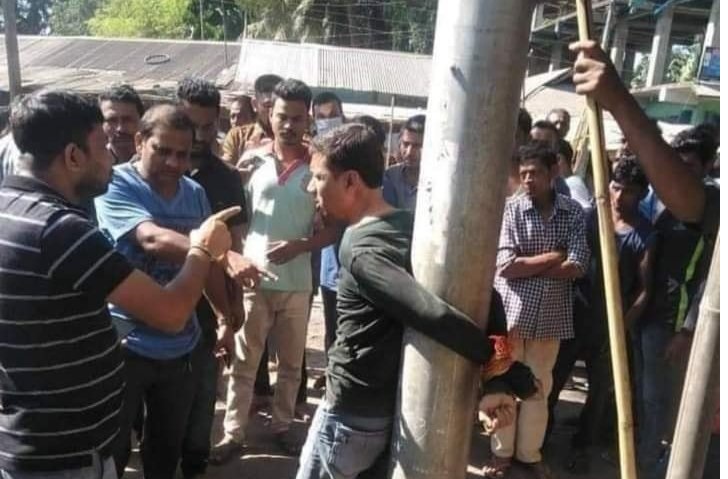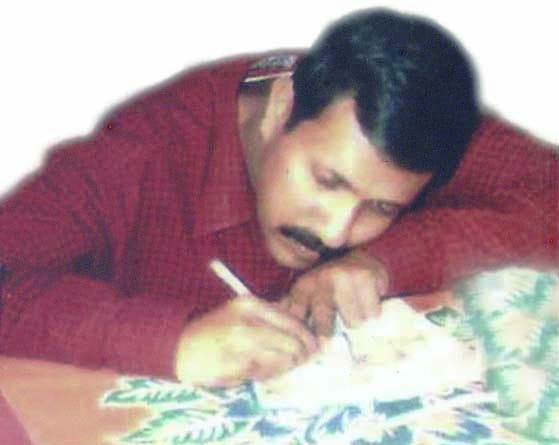
Reporters At Risk: Is Assam Going The Colombia or Mexico Way?
Latin American nations Colombia and Mexico remain the most deadliest places in the world for media workers, according to globalbodies of journalists such as IFJ and CPJ. Assam, nestled in India’s northeastern region, has also become an unsafe zone for media professionals with an increasing number of attacks and state atrocities coming to the fore in the past few months.
Team TNE
Milan Mahanta (in picture), a reporter with a leading Assamese daily, narrowly escaped from being killed at Mirza on the outskirts of Guwahati after he was tied to a pole and thrashed by a squad of gamblers, recently. The ordeal that lasted for half-an-hour came to an end only after some senior residents intervened and set him free.
The episode which occurred on November 15 gained wide publicity with a photograph of Milan being tied to the pole almost going viral on social media. So far, the police have arrested one culprit involved in the incident.
Other journalists in Assam have not been as lucky as Milan was on that day. Incredible but true that as many as 32 journalists have been killed in the disturbed state in the past three decades,accordingto the data compiled by the Assam Press Correspondents’ Union (APCU).
Evaluation of the cases show that different factors contributed to the murders of the journalists across the state at different periods of time, including the role of rebel outfits, surrendered militants, mafia and personal rivalry.
On 20 November, the Editors Guild of India (EGI) wrote to Assam Chief Minister Sarbananda Sonowal expressing concern over increasing incidents of violence against journalists in the state.
Target Of Militants & Surrendered Militants
At least seven journalists have been victims of militant groups in the past three decades that include the United Liberation Front of Asom (ULFA) and National Democratic Front of Boroland (NDFB).
The list compiled by APCU begins from the killing of Sivasagar-based journalist Kamala Saikia who was gunned down by the ULFA in 1991. His articles had highlighted the dark side of the outfit’s cadres, their lavish lifestyles and lack of revolutionary fervour which invited the ire of the outfit.
There are also reports suggesting a similar case in 1987 when a Nagaon-based journalist Punarmal Agarwala was reportedly shot by militants for his critical reports.
However, the episode that sent tremors in the state was of noted journalist Parag Das who was shot in the heart of Guwahati by a squad of assassins in 1996. Das was executive editor of the newly launched Asomiya Pratidin and was known for his pro-ULFA views.

The case was handed over to Central Bureau of Investigation (CBI) about six months after the assassination. The charge-sheet submitted by the agency failed to pinpoint the killers although it mentioned the spat between Das and a group of surrendered ULFA (SULFA) activists months ahead of the incident.
Similary, the CBI failed to unearth the conspiracy that led to the killing of another editor, Anil Majumdar, in Guwahati by a SULFA functionary Bijoy Phukan who was named in the closure report submitted in 2015.
Bodosa Narzary, Dipak Swargiary and Manik Deuri were among the journalists believed to have been shot by the NDFB. And there were a few cases such as Jagat Jit Saikia, Pabitra Chutia and Indra Hakasum who have remained untraceable so far.
Mafia & Miscreants As Assassins
On 12 November, Tinsukia based journalist Parag Bhuyan who worked for Pratidin Time, died at a hospital after being injured in an alleged hit-and-run incident outside his home at Kakopathar a day earlier. Police have arrested the driver, a commercial transporter of tea leaves, and his assistant and confiscated the car.
Nitumoni Saikia, editor of Pratidin Time news channel, alleged that Bhuyan was murdered possibly in retaliation for his reporting on corruption. The government has ordered a probe into the incident.
Journalists operating out of remote and inter-state border regions in Assam are certainly at greater risk from the mafia and miscreants. A wide range of criminal activities and crime syndicates thrive in the region with the active involvement of a section of politicians, police and over ground militants.
Before Bhuyan, a similar case was reported in 2006 in which, Prahlad Goala died near Golaghat after being knocked down by a vehicle while he was returning home on a motorbike. The body showed multiple wounds, probably from stabbing, which suggest that the death was well-planned.
Prahlad worked for Assamese daily Asomiya Khabar. His reports had exposed the illegal activities of some forest officials, who were associated with the timber mafia and making money from the schemes sanctioned for villages. Police arrested ranger K Zaman Jinna of the Nambar Wildlife Sanctuary on the suspicion that he engaged a professional killer to kill Goala.
Killings by miscreants were more during the period that include the cases of Nurul Haque who was based in Nagaon, Mohammad Moslemuddin of Hojai and editor of Sonar Cachar Ranbir Roy. And there were cases as well in which journalists were killed for personal rivalry. Bimala Talukdar’s death in Nagaon serves as an example.
